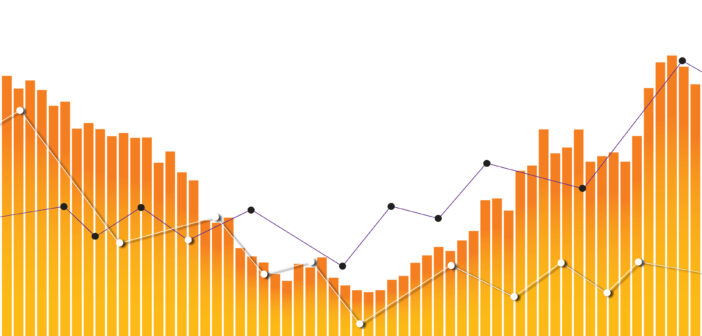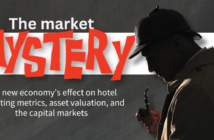As COVID-19 continues to affect hotels across the nation, many are wondering when the light at the end of the tunnel will appear
As an excess of factors continue to affect hotels in the United States, from a pandemic to a heated election season, hoteliers are understandably waiting with bated breath for insights about when the industry could begin to see a recovery.
There’s no doubt that the COVID-19 pandemic flung the U.S. into another recession, with the National Bureau of Economic Research officially calling it as such in June. As of October 2020, the unemployment rate in the country stood at 6.9 percent, according to the Bureau of Labor Statistics. Although that rate was a 1-percentange-point improvement over the previous month, it was nearly twice the 3.5-percent rate in February right before the pandemic was in full swing. By comparison, at its peak in January 2010 during the Great Recession, unemployment notched 10.6 percent in the U.S.
For their part, hotel data prognosticators have been crunching the numbers as best they can in an ever-changing landscape to best forecast when U.S. hotels might see an upturn.
DEMAND AND REVENUE
According to STR and Tourism Economics, full recovery for hotel demand and room revenue in the U.S. isn’t likely until 2023 and 2024, respectively. To show how far levels have fallen year over year, the 40-percent demand decrease STR projects for the third quarter of 2020 will be an improvement from the 57-percent decline seen during the second quarter of the year, according to Amanda Hite, STR’s president. “Even with a slight improvement in [average-daily-rate] projections through 2021, pricing confidence will lag an eventual rise in occupancy. As a result, the $32-billion gain we forecast for room revenue from 2020 to 2021 will push the industry to a level that is still 32.5-percent lower than 2019.”
“Economic recovery is ongoing but fragile, and COVID-19 is expected to continue to define the travel environment through the first quarter of 2021,” said Adam Sacks, President of Tourism Economics. “This sets a pace of tempered, cautious recovery in travel activity in the near term, with much stronger growth anticipated in the second half of next year.”
While STR forecasts U.S. hotel demand to fall 38.9 percent in 2020, the data company projects it will rise 32.2 percent in 2021. The three key performance metrics are all expected to end 2020 with significant double-digit declines before seeing some growth in 2021. While occupancy is projected to fall 39.7 percent in 2020, it will increase 30.5 percent in 2021. ADR will fall 20.9 percent and then rise 5.6 percent in 2021. Finally, revenue per available room is forecast to decrease a whopping 52.3 percent in 2020 before increasing 37.9 percent in 2021. Those 2021 growth figures might look eye-popping; however, it’s important to remember the base they will be growing from. At any rate, STR does project that occupancy will hit 52 percent in 2021, coming off a base of 39.8 percent in 2020. By comparison, occupancy sat at 66.1 percent for U.S. hotels in 2019 before the COVID-19 pandemic hit.
SEGMENT BY SEGMENT
Breaking data down further by segment, midscale hotels in the U.S. are expected to see demand plummet 25.1 percent in 2020, according to CBRE’s forecast, which pulls in data from Kalibri Labs. By 2021, demand for the segment will increase 24 percent, with occupancy clocking in at 55.1 percent. Occupancy is then expected to reach 60.6 percent by 2023, and then growth will remain relatively flat through 2024.
In the economy segment, CBRE expects demand to drop 17.9 percent in 2020 before increasing 11.8 percent in 2021. By 2023, occupancy should hit 57.4 percent for the segment and then growth will remain almost flat through 2024.
“Our forecasts of demand are dependent on both the health of the economy, as well as the spread of the COVID virus,” said Robert Mandelbaum, Director of Research Information Services for CBRE Hotels Research. “If we see a surge in the virus which extends containment beyond the spring of 2021, then we can assume municipalities will continue to implement social-distancing rules, which will extend the recovery of group demand. In turn, this would extend our forecasts of recovery in demand.”
TREKKING THROUGH RECESSION, PREPARING FOR RECOVERY
Generally, hoteliers and data crunchers look to past recessions for clues as to how to act – or not act – during a current downturn as they make plans for a pending recovery. This time around, however, throws out some new challenges and precedence.
“The impact of COVID-19 is truly unprecedented, both in terms of level of downturn and unknown duration,” said Larry Trabulsi, Executive Vice President of asset management at CHMWarnick and vice president of the Hospitality Asset Managers Association (HAMA). “Cost reductions implemented have reduced operating break-even before fixed expenses to levels lower than ever anticipated or realized. The bigger lesson learned so far has been on trying to hold average daily rate. Prior downturns saw dramatic price reductions that took years, if ever, to recover.”
“A fear for one’s health as well as social-distancing rules are factors that make this industry recession different from those in the past,” Mandelbaum said. “In general, the industry fundamentals [occupancy, ADR, RevPAR] were strong entering 2020 and forecast to remain at high levels compared to long-run average performance indicators. Unlike past industry recessions, there were no, or limited, concerns regarding over supply, over leveraging, undisciplined financing, and artificial tax incentives. These also are reasons why we believe there will be a relatively quicker pace of recovery once people are confident that the ‘health hurdle’ has been cleared.”
BE PREPARED
To prepare in the meantime, Mandelbaum offered several pieces of advice for hoteliers: pay attention to changes in operations that give guests a greater sense of security regarding health, safety, and sanitation:
- Determine which, if any, cost-control measures implemented in 2020 can be continued beyond the recession without affecting guest service and satisfaction.
- On the revenue side, decide which creative services and amenities implemented in 2020 can be retained in the future.
- Maintain relationships with meeting and corporate travel planners in 2020. “You will need their business when the industry recovers,” Mandelbaum said.
When it comes to working with lenders – especially CMBS debt providers, which 40 percent of respondents in HAMA’s “Fall 2020 Industry Outlook Survey” believe have only been somewhat flexible – Trabulsi said communication is key.
“The reality is that there are a lot of unknowns on recovery and profitability,” he said. “One key we have seen is the relationship between owner and lender is more important than ever.”




